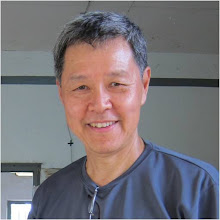It is easy enough to think of a concentration-response relationship based on static concentrations of active drug in an incubation medium but drug concentrations in clinical practice are almost never static (unless administered as a fixed infusion regiment). Concentrations fluctuate over a dosage interval, and even in a pseudo-steady state situation simulated through multiple dosing, concentrations continue to fluctuate. Even 'average' concentration are seldom stable because patient's compliance vary dose to dose and over days and weeks. It is therefore almost never possible to identify drug effects with any drug concentration. For convenience, we refer to average (randomly obtained) concentrations, peak concentrations, trough concentrations or even areas-under-the-curve (AUC) if multiple sampling has been done over a dosage interval, but in reality we seldom know which concentration measurements best reflect the observed drug effects.
Different aspects of the drug effects may in fact to different types of concentration measurements. Toxicity effects may in fact relate more to peak concentrations while therapeutic effects may related better to trough concentrations. In some situations the converse may even be true. In various other situations drug efficacy may better relate to an index of exposure such as the AUC, or even the amount of time exposed to concentrations above a certain threshold concentration value.
Another aspect of the temporality of drug effects may be related to the involvement of down-stream effects of any drug action. Significant delays in drug effects 'coming on' and 'going off' will make the association between drug effects and concentrations less obvious.
Here's an interesting exercise for you:
We know that there is a sigmoidal log concentration-effect relationship. There is also a log decline of concentrations (assume simplest one compartmental IV model) over time. How would the Effect - Time relationship look like? Email me your answer.








No comments:
Post a Comment